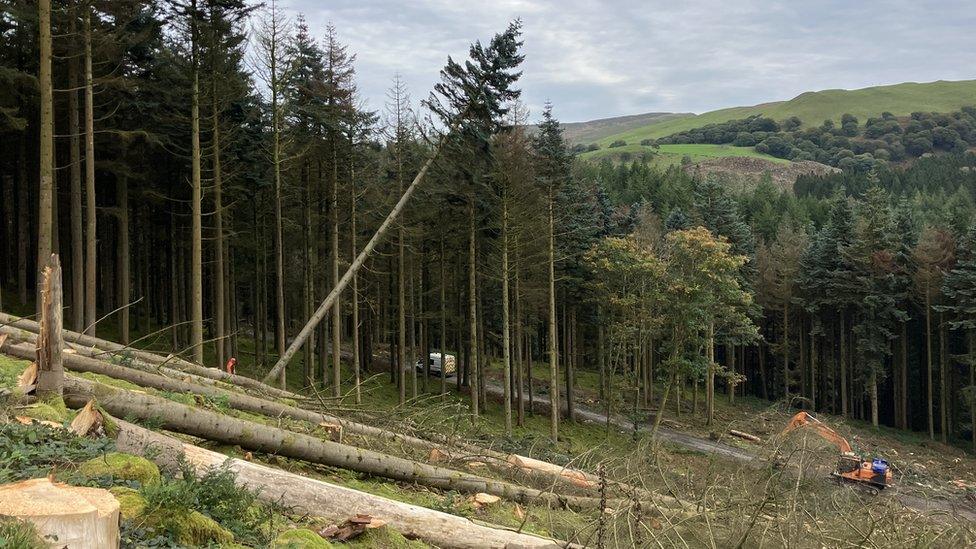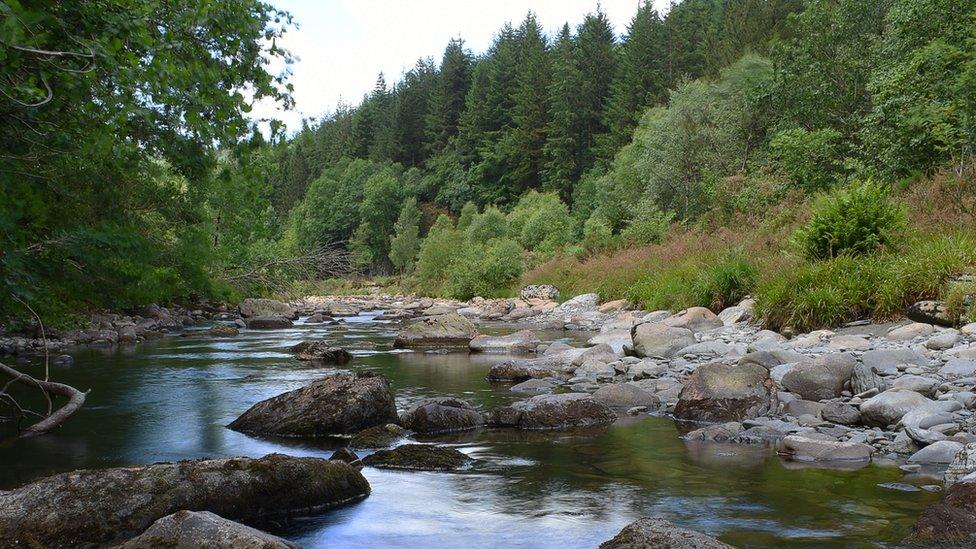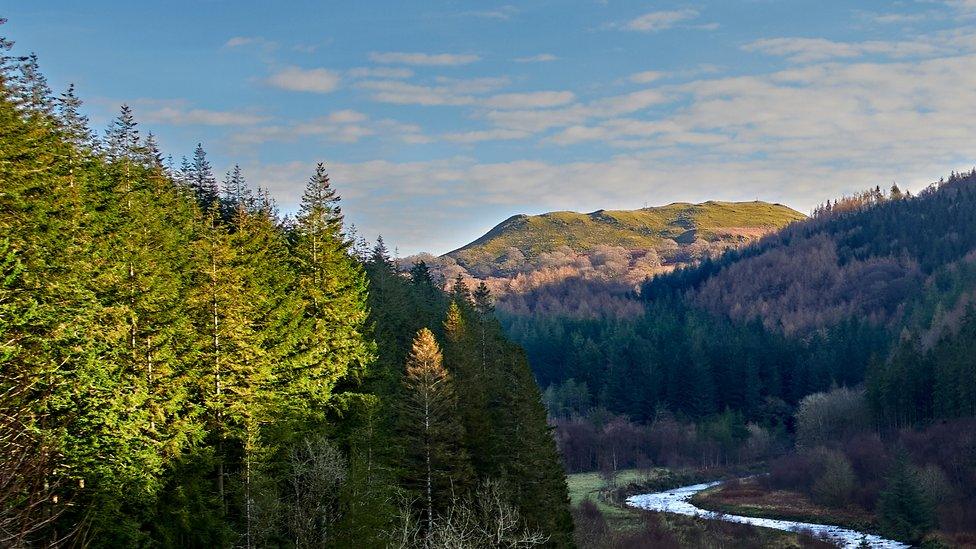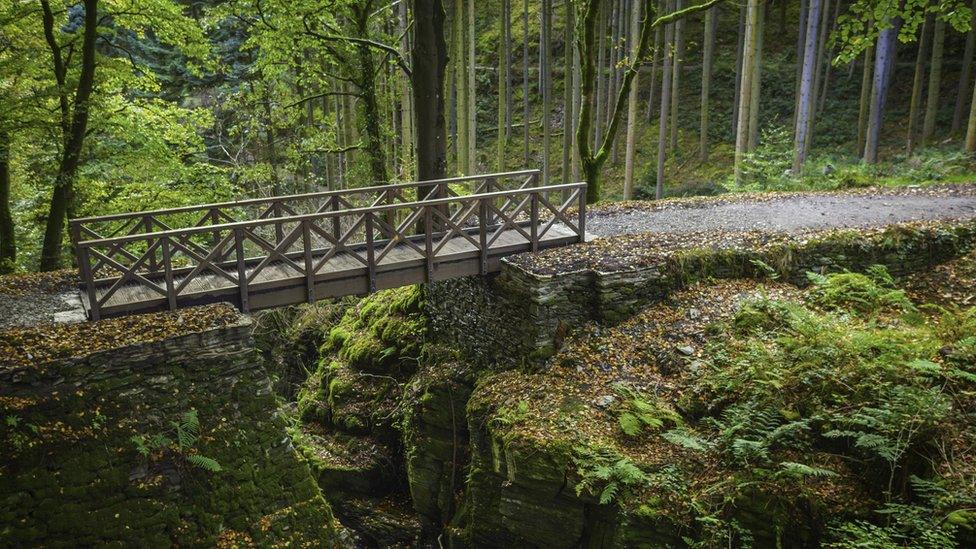Hafod Forest: Infected trees beauty spot stays open
- Published

About 1,300 trees are being cut down
A beauty spot blighted by infected trees will remain open to the public while the trees are felled, the National Trust has said.
About 1,300 trees on the Hafod Estate in the Ystwyth Valley near Aberystwyth, Ceredigion, are being cut.
Natural Resources Wales (NRW) found they were infected with diseases such as fir canker.
The work affects 6.5 hectares (16 acres) of nearly 400 hectares (988 acres) of forest.
Gwenno Griffith of the National Trust, which looks after the estate, said: "Hafod remains open, but we do have - because of the felling that's going on - some closures in place on the footpaths.
"The closures affect just over a mile of footpath but there's over seven miles remaining open.
"So it allows people the opportunity to perhaps visit parts of the estate they haven't for a long time and get a different viewpoint, whilst visiting the estate."
"There'll be a reversion to semi-natural woodland, so Natural Resources Wales will manage that and then we as the National Trust will continue to look after the footpaths to ensure that there are opportunities for people to explore those new areas and see them develop over the years, back to what they were naturally once were."
Although the National Trust looks after the Hafod Estate, NRW is responsible for the trees.
With heavy machinery used to clear the infected trees, the public are being asked to keep away from areas of operation.

Trees on the Hafod Estate in Ceredigion have been made unsafe by disease
It is important to remove the trees for the public's safety, according to Alan Wilson from NRW's forest operations team.
"We've been aware that the trees in this area have been in poor health for some time but it was really earlier this year we became aware of the extent of the damage and how rapidly they were declining," he said.
"We've had to change our plans for the area in order to manage the safety of the site. There's a huge amount of visitor use of the area.
"So if we left them they'd become unstable and we need to deal with them fairly rapidly."
He said the initial felling works are estimated to last for five to six weeks, with the transport of timer lasting for another four or five weeks.
This is expected to impact the central road through the centre and the national cycle trail.
- Published9 October 2023

- Published22 October 2017
